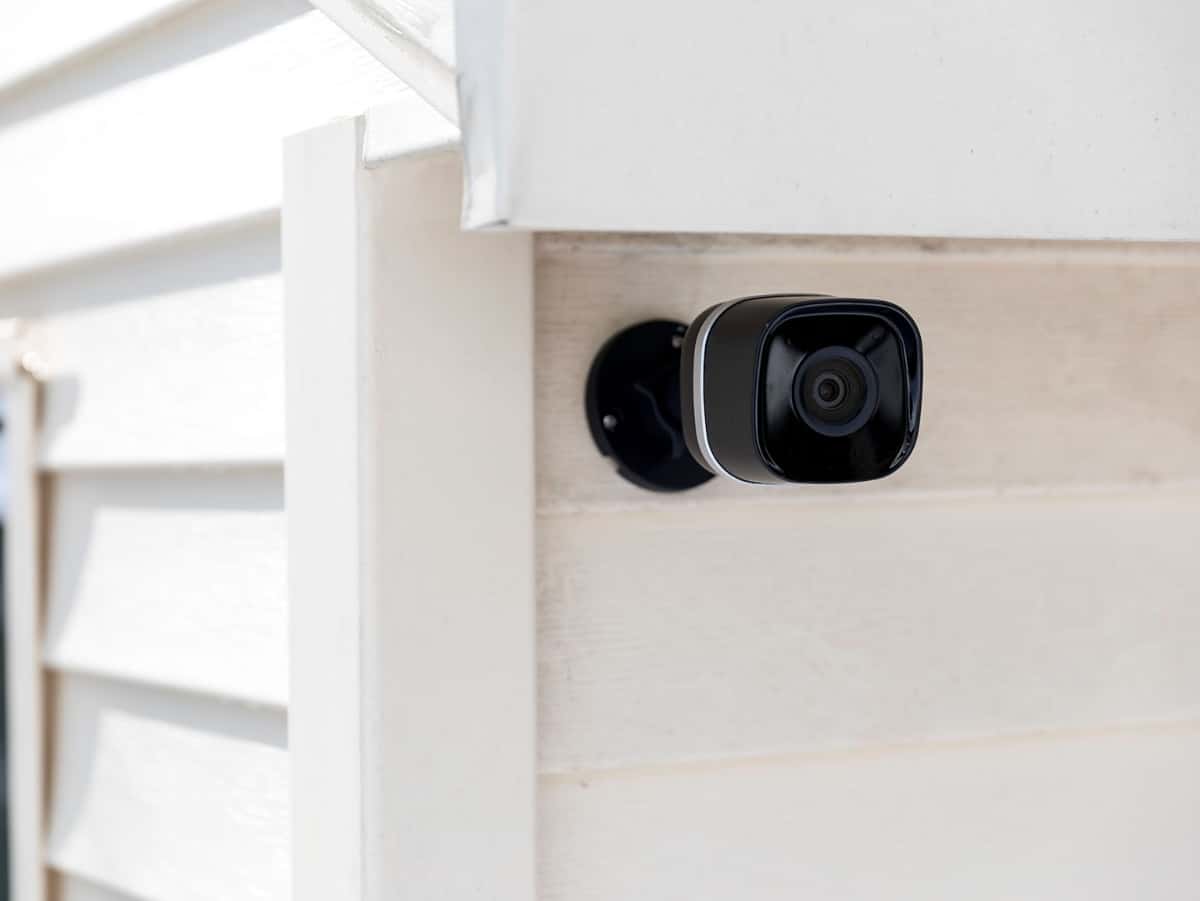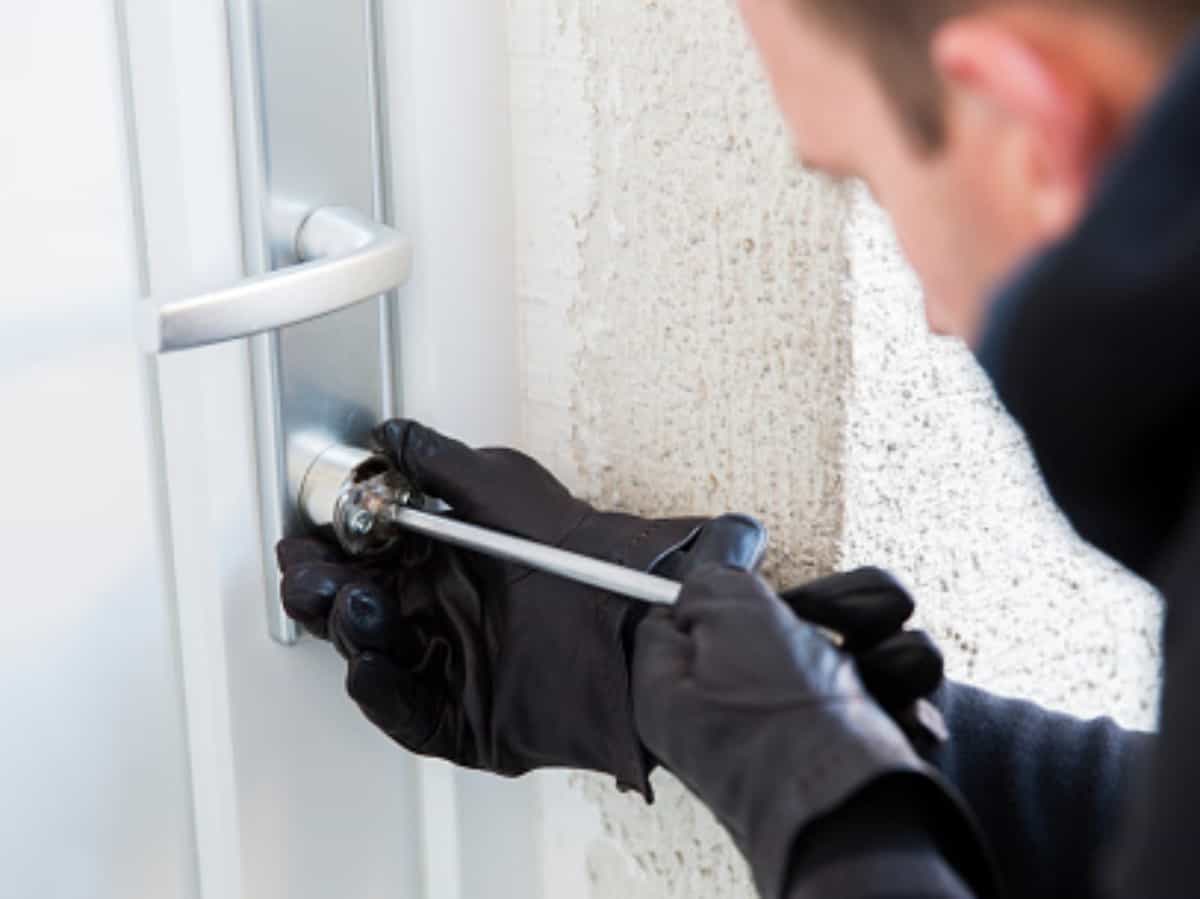Let’s just go straight into it: a home invasion is a common fear. The idea of someone lurking through your home, going through your belongings, and causing physical harm is something found in true crime documentaries. Other than the psychological trauma of a burglary, there’s also a cost factor. So, what is a home invasion mean to your wallet?
Unfortunately, a home invasion costs you a lot more money than you realize.
Listen to the Facts
While some might not want to include another monthly subscription with a home security system, the low price monthly installment costs less than the price of a break in. We buy subscriptions for every streaming service because we never want to miss a movie or TV show. So why wouldn’t you add a home security system to make sure you’re protected?
Let’s go over the costs, hidden fees, and everything that goes into a home invasion so you can see why having a home security system is the best choice for homeowners.
Statistics of Home Break Ins
At some point in your life, you’re probably guilty of using the phrase, “well, that’s never going to happen to me.” Instead of living by that phrase and hoping for the best outcomes, having the information about statistics is crucial towards heading into the reality of home break ins.
- Two million homes are violated by burglary every year.
- The FBI states that the cost of property crime (burglaries, larceny-thefts, motor vehicle theft) in 2014 resulted in financial losses of more than $14.3 billion
- A burglary takes place every 15 seconds
- The average homeowner suffers loss of nearly $2,000 in both property damage and stolen goods
- Home burglary leads to an increase in home insurance premiums, oftentimes it can be permanent in that household address.
- 66% of break ins are residential, while the remaining 33% target small businesses
- 95% of break ins are done through forceful entry into the home
- 38% of assaults happen during home invasions, 60% of sexual assaults
- Homes without a home security system are 300% more likely to have a break-in
- Only 17% of burglaries are on homes with a home security system in place
- 85% of burglars are amateurs and desperate, creating a dangerous combination if someone was home or walked in on the burglary

What’s Cheaper: A Home Break In or a Security System?
Let’s talk numbers. When it comes to deciding on whether or not to get a home security system, you need to know the firm numbers of what a home security system costs, versus what a break in would cost.
- On average, homeowners pay $2,800 due to a break in. This does not include the cost to replace personal items that can not be replaced
- An ONIT Home Security system costs $39/mo
To sweeten the deal, it’s important to know that having a home security system greatly reduces your chances of a home invasion. Again, homes without a home security system are 300% more likely to be broken into. However, statistics show that people with home security systems and a sign in their yard are 60% less likely to be broken into.
We’re not sure about you, but we’ll take the sign in our yard and a 60% decreased chance of having our home vandalized and our safety threatened for only $39/month.
To find out more about how an ONIT Home security system works and our equipment, visit us online or give us a call today at 1-833-433-0331 to find out more. Remember, home invasions happen every 15 seconds, so don’t delay!
What is a Home Invasion Going to Cost?
When it comes down to the final calculated cost of a home invasion, there are a few different items to consider with the cost. There are some obvious ones, such as the cost to repair your doors and windows, but there’s also hidden costs such as taking time off work or paying for accommodations in the interim.
There are different factors that weigh into the true cost of a home break in, so let’s digest all the different variables that lead to Americans paying $3.4 billion in repairs to personal property every year due to home invasions.
Auto Theft
If your home is broken into, there’s the chance that the burglars could also go after your car in the garage. Here’s the cost breakdown if your vehicle is vandalized or stolen during a home invasion.
Vandalized or Broken Into
If your car is broken into or vandalized, first you need to take an assessment of the damage. Damage could include structural or interior damage. Here are common prices on vandalism:
- Broken window: $200 to $450, depending on damage. However, if the motor for the window is damaged, expect to pay an additional $240 to $400, plus labor.
- Broken windshield: $200 to $400 depending on company and glass type.
- Seat replacement: $350 to $2,000, depending on make and model
Is This Covered by Insurance?
Unless you have comprehensive coverage, your policy likely won’t cover any damages due to vandalism and only due to accidents. Comprehensive coverage includes theft and vandalism, where the standard liability insurance does not.
Not sure what type of coverage you have? Look over your policy or contact your insurance carrier and get an appropriate idea prior to filing a claim.
Stolen Vehicle
If your car is stolen, you’re only covered by insurance if you have comprehensive coverage. Additionally, if you have any personal belongings in your stolen vehicle, your insurance will not cover the losses. So, if you have your computer in your car and it’s stolen, the car insurance will not cover the loss.
If you do not have comprehensive coverage, you’re on your own for replacing your stolen vehicle if it is never recovered. However, don’t rely on your stolen car being located after the fact. According to data from 2017, 59.1% of vehicles are recovered locally, while the overall recovery rate in the United States is 29.2%.
Who Do You Contact?
This is where things can get a little confusing for some victims of break-ins. If your car is damaged, such as a broken window, that would fall under your car insurance if you have comprehensive coverage. If there are stolen items, that goes to your homeowners insurance, as it is personal property.
Remember that in order to have insurance help with the coverages, you’re going to need to pay a deductible. If the prices for the repairs are less than your deductible, it is best not to file. For example, if the repairs are totalling $400 and your deductible is $500, just pay out of pocket. But, if your repairs are over $500, your best bet is to file the deductible and have insurance help with the cost.
Similarly, if your stolen items amount to less than your deductible, it’s best to not file with your insurance. But, if you have an item, such as a laptop, stolen and it’s $1,300 and a $500 deductible, your home insurance will pay you $800 if you have replacement cost coverage.
But, keep in mind that the average cost of a home break in is above $2,000, so it’s more than likely that you’ll be paying a deductible and covering the initial cost of the break in. As a reminder, the more deductibles you file, the higher chance your auto insurance cost will increase.
What is a Home Invasion Deductible Like?
Deductibles are tricky. As mentioned in the section above, you have to weigh the option of filing or not filing a deductible depending on how much damage occurred. Adding in the cost of a deductible is a cost that needs to be weighed when determining the true cost of a break in.
The typical deductible prices for home insurance are $500, $1,000 and $1,500. There are even some policies that have a deductible of up to $2,500. In these instances, the homeowner is responsible for taking care of the first $2,500 in damages. Therefore, if your home is damaged in a home invasion, you’re already out $2,500 before anything else is factored in.
Types of Deductibles
However, there are different types of deductibles that homeowners can have such as:
- Flat deductible: this is a fixed dollar amount that the homeowners are expected to pay towards the claim. This is the most common form of deductible. This is used in the case above, where the deductible is the flat amount you’re paying for every claim.
- Percentage deductible: this is based on the home’s insured value. If a home is insured for $250,000 and the deductible is 2%, the policyholder is responsible for the first $5,000 of a claim (250,000 x 0.02 = 5,000).
- Split deductible: this is a hybrid deductible. An example of a split deductible is an insurance policy having a $2,000 homeowner insurance deductible for everyday occurrences (such as a home invasion), but requires homeowners to pay the percentage deductible for claims due to disasters (hurricane or earthquakes). Each insurance policy has a list of which claims lead to a percentage deductible, often referred to as a disaster deductible. However, since a home invasion falls under an everyday occurance, a homeowners deductible rate is the flat deductible amount.
Cost of Repairing Point of Entry
With 95% of break ins occurring through forceful entry into the home, having damage to the immediate area of entry is common. Here are the most common access points for home invasions according to Zebra:
- 2% of burglars enter through the second floor
- 9% of break-ins occur through the garage door
- 9% of entry points are through the basement
- 22% of back doors are used as the main entry
- 23% of burglars enter through a window
- 81% of break ins enter through the first floor
Knowing that forceful entry is common and doors and windows are normal access points, you can expect some damage to ensue in those areas. So, how much does it cost to repair those points of entry? Following the list of common access points, you can expect to pay the following in damages to those areas:
Repairing a Garage Door
Prices range from $147 to $341 depending on damage. Common areas of repair include fixing locks, tracks, cables, garage door openers, opening/closing issues, sensors, and the springs. If the garage door needs to be replaced, expect to pay up to $599 plus labor costs.
Cost to Repair or Replace a Broken Door
The average cost to repair a door is $228, with the minimum cost at $52 and the maximum cost of $600. This price is dependent on where you live, the material that the door is made of, and the extent of the damages.
There are some cases where the damage to the door is so extreme that there is no option for repairing, but instead it’s a total replacement. In the event that this happens, the average price for door and labor costs around $1,092.
This price can be varied depending on the location of the door. For example, if the burglar damages an exterior door, it’s more expensive than an interior door. However, since doors are typically damaged due to forceful entry, expect to pay top price for replacing a door that leads outside.
If there is damage to the door frame as well, the total repair price increases from $50 to $70 for a basic frame and $99 to $128 for a steel frame. This is the cost prior to labor, so expect to pay the handyman an additional $30 to $150 for both labor and parts.
Glass Door Replacement Costs
While not all doors are just solid wood, there are also times when a burglar enters through a glass door. Here are the common replacement costs based on the type of door, according to Home Advisor:
- Front Door: $100 to $500
- Patio Door: $150 to $300
- Storm Door: $150 to $275
- French Door: $200 to $450
- Shower Door: $500 to $1,800
- Sliding Door: $500 to $5,500
In total, your broken door can cost you anywhere from $52 for limited damage to over $5,500 for total replacement. Additionally, keep in mind that this is an immediate repair, so chances are, you’re paying this out of pocket until your insurance can compensate you once the claim has been finalized.
Repairing or Replacing a Window
The average cost of repairing or replacing a window is tricky, due to the nature of the window and the damage that ensued. The cost averages at $350, with the minimum and maximum between $200 and $500. However, there are repairs that are timely, costly, and extensive. Expect difficult repairs to be as much as $2,000. Additionally, factor in labor between $30 to $50 per hour it takes.
If your window is beyond repair and needs to be replaced, expect the following prices based off the type of window pane:
- Single Pane: $50 to $75
- Double Pane: $100 to $300
- Bay Window (3 pane): $500 to $1,000
- Bow Window (5+ pane) $1,000 to $3,000
A hidden cost of having a broken window falls into your utility bill. With a window granting free access to the environment, you can expect to use more air conditioning or heating to keep your home comfortable in the interim.

Destruction of Personal Property
The average loss on personal property during a home invasion totals up to $2,000. However, there are items that money just can’t replace. Items that are family heirlooms, wedding jewelry, or items picked up on travel aren’t always replaceable.
When it comes to destruction or theft on your personal property, there are a few steps you need to take with your insurance to get compensated.
- First, you need to report the break in to the police. Typically, your insurance will ask you to provide the police report in order to file a claim.
- Then, have your emergency repairs done. This includes doors that have been damaged and broken windows. Keep all your receipts for reimbursement. It’s also a good idea to make copies of the receipts and save them in an electronic format, so you have it in multiple locations in the event you lose the original receipt.
- Take photos and document all the areas of your home with damage. Additionally, take photos of the areas where items were stolen.
- Last, file a claim with your insurance company. An adjuster will review your policy, coverage types, scheduled items, sub-limits, and deductibles.
What You Need to Provide to Your Home Insurance
If you had personal property stolen from your home in a home invasion, you’ll need to provide details to your insurance carrier after the fact. According to Forbes, you’ll need to supply your insurance with the following information as soon as possible:
- Where and when your item(s) was purchased
- The estimated value of the item
- The item’s brand and model
In order to verify the value of the stolen item, expect your insurance to ask for the following:
- Receipts
- Photographs
- Credit card statements
- Bank statements
- Serial number(s)
- Warranty information
To get ahead of these tasks, consider creating a home inventory to maximize your claim payment.
What is a Home Invasion Affect on Home Insurance Cost?
Unfortunately, every action comes with a reaction. Oftentimes, the action of a burglary leads to the reaction of an increased home insurance policy. Increases to your price vary on where you live and if you’re located in a high crime area. Additionally, the insurance company could raise your price depending on the value of your claim loss. If you had a high claim loss, you can expect your insurance prices to skyrocket.
While standard insurances cover the damages and loss of stolen items, there are still limitations to what they can due based on the coverages you’ve purchased. Bankrate lists the following limitations to consider when dealing with your home insurance and a break-in.
- You receive the Actual Cash Value (ACV) for the depreciated value of your stolen items. For example, a computer that was purchased for $2,000 in 2016 may only be valued at $400 in present time, according to the depreciation tables maintained by insurance companies.
- If you have an expensive Replacement Cost Value (RCV) policy, you may be compensated the total amount required to buy a replacement computer at today’s market value cost.
- Some home insurance policies have the hybrid approach and reimburse the ACV immediately after filing, and later pay the RCV amount through receipts and evidence to replace an item. Although, they only take the reasonable cost, so they will not compensate if you buy an item for more expensive than market cost.
- There are insurance companies with policy limits for high value personal items, such as jewelry and antique items.
While nobody wants their prices to increase, there are insurance companies who offer discounts or lower prices to households with home security equipment. This is because home insurance companies see homes with security as a less likely option for a home invasion.

Hidden Costs of a Home Invasion
Time Off Work
In order to get everything situated after a home invasion, you might need to take time off work. Whether you’re uncomfortable leaving your house unattended or present for repairs, not everyone has the ability to work from home. It’s also important to remember that not everyone has accumulated paid time off (PTO) days, or even have jobs where PTO is possible. Additionally, if you have to make court appearances, you’ll be taking more days off of work.
Knowing this, not only are you paying for a deductible or damage repair, but you’re also losing money by not being able to work.
Making Living Accomodations
In the event that your doors or windows are busted, chances are, you’re not going to feel safe sleeping in your home until it’s repaired. In that event, you have two options: staying with a family member or friend, or paying for living accommodations. According to USA Today, the average price of a hotel is $139/night in the United States, a 5.4% raise from 2019. With the prices on the rise, look out for spending extra cash in the future to give yourself a secure space in the early stages of your home repair.
Cleaning Services
It’s not often that you hear about a home invasion where the homeowner came home to their house being spotless. One hidden fee of a home invasion is paying for a cleaning service to come in and assist with the messes left behind. Home Advisor lists out different variables that affect the overall cost of a home cleaning service. Those factors include:
- Square footage
- City
- Level of cleaning required (regular or deep cleaning)
- Amount of cleaners necessary to complete the job
- Number of rooms
While there is no “one size fits all” when it comes to pricing, you can estimate the cost will be $25 to $90 per cleaner and per hour. Another estimation is 90 minutes per 1,000 square feet.
Repercussions of Identity Theft
There are examples of home invasions where the homeowners personal information has been stolen. Events like this include the thief taking a wallet, social security number, or form of identification. When this happens, it leads to serious repercussions in the form of identity theft. With over $56 billion in identity theft during 2020, the issue of identity theft grows year after year.
The individual cost of identity theft comes down to an average of $1,100 through losses. In order to protect yourself from it happening again, many people have turned to adding an identity theft insurance policy. This costs an average of $50 a year and protects individuals in a range of $10,000 to $15,000. Like any other insurance, if your total loss is over the top range of protection, you cover the remaining costs.

Home Invasions that Lead to Injury or Death
With 38% of assaults and 60% of sexual assaults happening during home invasions, there isn’t a price tag to show the long term effects through trauma and post traumatic stress disorder (PTSD) following an attack. Although most home invasions occur when someone is not home, there is still a percentage of home invasions that occur when the homeowner is present.
While some believe that they can protect themselves with a dog or a gun, this is not a guaranteed method of protection.
How You Save Money With Home Security
Protecting your home with security devices can lead to discounts on your home insurance. Before purchasing a package, reach out to your insurance carrier to see what items can help you with discounts. Some common home security devices that come with a discount include:
- Deadbolts on your exterior doors
- Burglar alarms that alert the local police department
- Smart home technology with alerts towards break ins
- Security cameras with wireless motion sensors
- Doorbells with video cameras
Cost of Home Security is Significantly Cheaper Than the Cost of a Home Invasion
You’re not always there to protect your family and your belongings. That’s why you should have a home security system do the work for you, around the clock. The importance of having a home security system is priceless. According to Zebra, the average cost is $2800 to the homeowner, excluding the additional items to pay for to replace personal items.
Let’s talk numbers. When it comes to deciding on whether or not to get a home security system, you need to know the firm numbers of what a home security system costs, versus what a break in would cost.
- Homeowners pay $2,800 due to a break in.
- An ONIT Home Security system only costs $39/month
Remember that having a home security system greatly reduces your chances of a home invasion. Again, homes without a home security system are 300% more likely to be broken into. However, statistics show that people with home security systems and a sign in their yard are 60% less likely to be broken into.
Partnering with ONIT means accessing top equipment, taking advantage of whole home services, and bundling great deals. No more long contracts, bad warranties, and fixed products. With our customizable smart home security options, you’re getting the inside deal on securing the best equipment.
How to Get a Top Home Security System with ONIT Home
We professionally install all equipment, so you can sit back and relax while we secure your home. Our ONIT promise lets families and businesses conquer projects big and small with trusted solutions and products.
Call us today to customize and build the right security system for your home! Visit us online for a free quote or give us a call today at 1-833-433-0331. With a home break in happening every 15 seconds, don’t delay and call us today!



